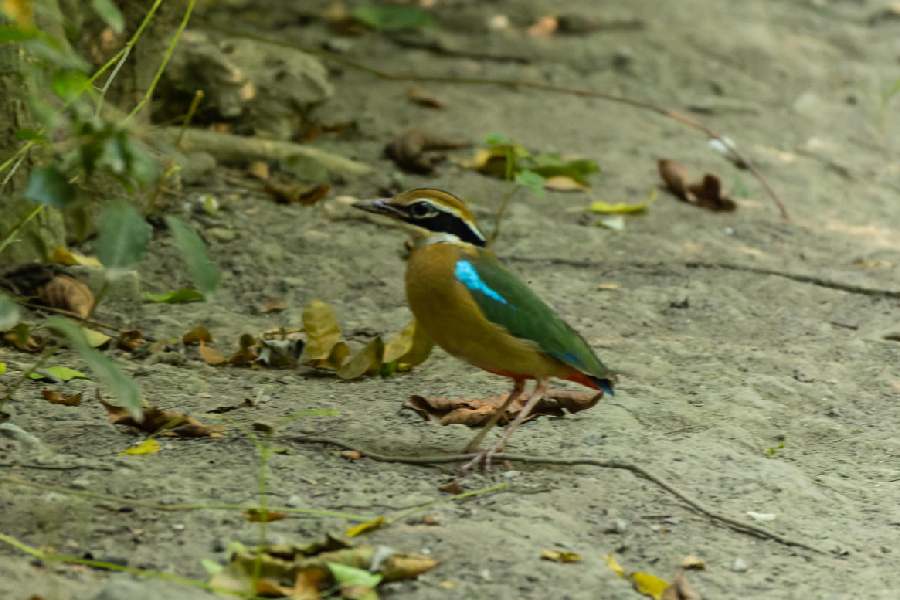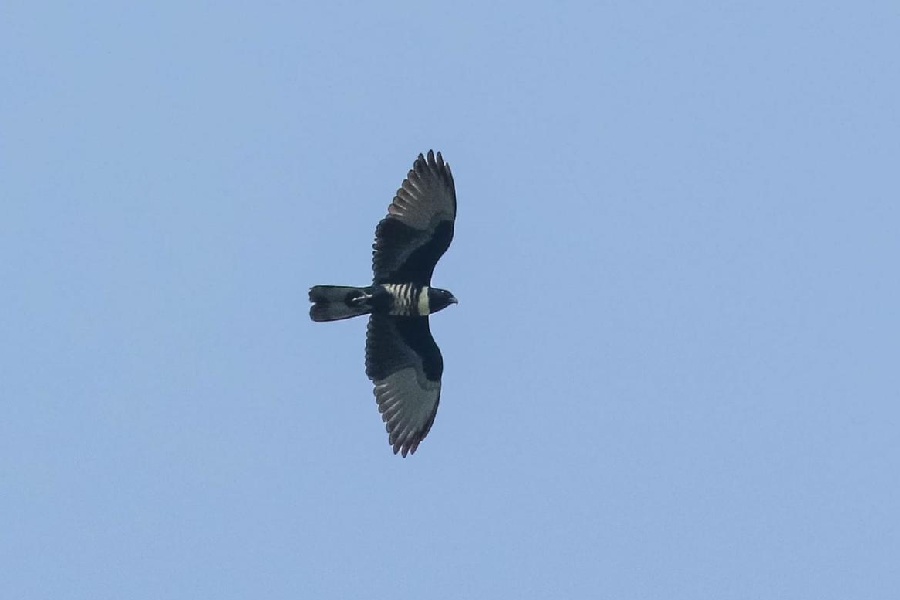Altogether 267 species were recorded by 120 birdwatchers on Saturday and Sunday during the second edition of the Poila Baishakh Bird Count.
The count could go up as those who registered for the survey have time till April 30 to submit their findings.
Many winter migrants were sighted during the survey, something that was not anticipated by the birdwatchers, who had presumed that the birds would not stay back into the peak of summer.
Prized watch
Rufous-necked Hornbill, which is listed as “vulnerable” by the International Union for Conservation of Nature, was sighted in Latpanchar in
Kurseong.
Kanad Baidya, one of the organisers of the Poila Baishakh Bird Count, said the bird is “globally threatened”. “People visit Latpanchar to see this bird because it is found in good numbers in these hills,” he said.

Indian Pitta. Tisha Mukherjee
The website of eBird, a platform created by the Cornell Lab of Ornithology of Cornell University in the US, says the bird “inhabits dense hill forest with tall mature trees.” It adds that the bird “forages for fruits in the forest canopy, usually in pairs or small groups” and “gives loud, echoing croaks, roars, and grunts”.
Indian Roller (Nilkontho) was sighted on both days. The State of Indian Bird 2023, a report prepared by eBird in partnership with multiple reputable organisations working in the fields of wildlife and natural history, said the population of Indian Roller has declined by 30 per cent in the last 12 years.
Some of the other species whose decline in population was mentioned in the 2023 report but were sighted on Saturday and Sunday were Terek Sandpiper, Little Ringed Plover and Kentish Plover.
New trends
The presence of many migratory birds, from outside the state as well as local migrants, surprised the birdwatchers.
Migratory birds escape the harsher winters in their breeding places and migrate to warmer regions. Intra-state migrants include birds that breed in the Himalayas and migrate to south Bengal during winter.
“One of the participants recorded a Black Baza, which breeds in the Himalayas, in Nadia’s Khisma forest. We did not anticipate seeing this bird in south Bengal in summer,” said Baidya, a member of the Birdwatchers Society, which organised the two-day count in collaboration with the Bird Count India.
Among the trans-Himalayan migrants that were spotted in the state were Pied Avocet, Siberia Ruby Throat and Taiga Flycatcher.
“Maybe these birds always stayed back till April but we were not aware of it. Birdwatching during summer is not very common, which is why we started the Poila Baishakh Bird Count to know the trends during summer,” said Baidya.
Concern
Low participation in some districts and destruction of habitats were the twin concerns that birdwatchers flagged.
Pictures posted by birdwatchers showed an Oriental Pratincole and a Black Francolin standing on burnt grass. The Oriental Pratincole was spotted in the Baruipur marshlands and the other in West Midnapore’s Garh Jungle.
The two pictures show how their habitats were getting destroyed, said birdwatchers.
Mittal Gala, a project coordinator with the Bird Count India, said annual bird counts help birdwatchers spot trends. “Any decline in population or destruction of habitat will show up in such bird counts,” she said.
Baidya said one of the concerns was not being able to inspire enough people from some districts like Uttar Dinajpur and Purulia to participate in the survey.
“There are many photographers but documentation and record-keeping in a place is necessary. We need to build robust data and that will be possible if there is more participation,” he said.
